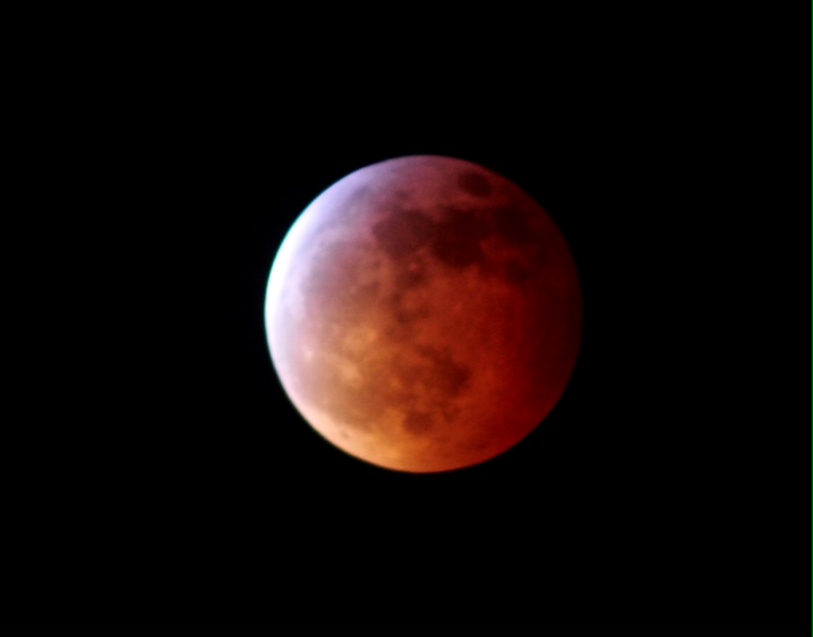Total Lunar Eclipse, May 26, 2021
On Wednesday, May 26, there will be a total lunar eclipse (when the Moon goes into Earth’s shadow). Weather permitting, everyone on Earth’s dark (night) side will be able to see it. The eclipse will occur in the early morning, shortly before sunrise, as seen from the western continental United States, western Canada, southern Alaska, Mexico, and the southern part of South America. It will occur in the middle of the night as seen from Hawaii. [Across the Pacific Ocean, it will be visible on the evening of Wednesday, May 26, in New Zealand, Australia, Indonesia, Japan, eastern China, and eastern Russia.] See the excellent website https://www.timeanddate.com/eclipse/lunar/2021-may-26 for a detailed map and the ability to see whether the eclipse will be visible from a specific location.

Totality will last about 15 minutes, a relatively short total lunar eclipse. Unlike the case in a total solar eclipse, the lunar eclipse will occur at the same time (after adjusting
for time zones) from any location where it is visible. No optical aid is needed — just use your eyes (though the view through binoculars should be interesting as well). A photo of a total lunar eclipse (January 20, 2019, taken by Richard Spence) is shown above, and you can find many more on the internet.
Here are the relevant times in California; adjust for your time zone if you will be away from Pacific Daylight Time (PDT). (For example, mid-eclipse will be at 1:19 am Hawaii Standard Time on Wednesday morning, May 26 — that’s late on Tuesday night, of course.)
Partial eclipse begins: 2:45 am PDT Wednesday, May 26
Total eclipse begins: 4:11 am PDT
Mid-eclipse: 4:19 am PDT
Total eclipse ends: 4:26 am PDT
Partial eclipse ends: 5:52 am PDT
“Prime time” (total eclipse) will be 4:11-4:26 am PDT. The Moon will be west, low over the horizon, shortly before it sets; try to avoid obstructions like mountains, buildings, and trees. The farther east you are in the continental United States, the closer to the horizon the Moon will be, and the closer to sunrise the eclipse will occur; Denver, for example, is near the eastern boundary, though at least a partial lunar eclipse will be visible throughout most of the continental United States. Viewed from southeast Asia, the Moon will appear low over the eastern horizon, shortly after it rises.
Again, for more information see https://www.timeanddate.com/eclipse/lunar/2021-may-26 . Also, let me alert you to a handy astronomy/space calendar from the New York Times that you can download right to your Google or iOS calendars. Here’s the 2021 version: https://www.nytimes.com/interactive/2021/science/astronomy-space-calendar.html .
Note that there will be a partial solar eclipse (“annular” in some small parts of the world, so the Sun will look like a ring) on June 10, visible over much of the continental United States. I’ll try to provide more information later, but you can find many details here: https://www.timeanddate.com/eclipse/map/2021-june-10 .
Wishing you clear skies during the night of May 25/26,
Alex
Additional details:
The Moon doesn’t appear completely dark during a total lunar eclipse because some sunlight goes through Earth’s atmosphere and is bent (refracted) toward the Moon, and then it bounces off the Moon back toward us. But the Moon’s color generally appears some shade of yellow, orange, or even red because the light that reaches it has been filtered by Earth’s atmosphere, preferentially getting rid of the violet, blue, and green colors — just as in the case of the setting or rising Sun, which looks some shade of yellow, orange, or red, depending on the amount of particular matter (such as smoke) in the atmosphere.
Also, this time the full moon will be a little closer to Earth than average in its elliptical orbit and therefore look a bit bigger — a “Super Moon” (or “Supermoon”). But in my opinion, this is often exaggerated by the press; though the Moon is nearly at its closest to Earth in its elliptical orbit, even the best Super Moon looks only slightly bigger (6-7%) and brighter (12-14%) than an average full moon. Also, “Super Moons” are pretty common; in fact, this will actually be the second in a series of three consecutive “Super Moons” in 2021. Since the totally eclipse Moon can appear reddish orange, it is sometimes called a “Blood Moon,” so this particular eclipse will be a “Super Blood Moon.”
Given that the Moon will be passing through the top part of Earth’s shadow, I predict that at the time of mid-totality, the top (north) part of the Moon will appear substantially
brighter and more yellow/orange than the bottom (south) part of the Moon (darker; orange/red).
Note that during the partial phases, Earth’s shadow on the Moon looks distinctly curved. This is always the case during a lunar eclipse, and it was one of the many pieces
of evidence that the ancients used to conclude Earth is round, not flat.
In the above list of times, I didn’t include the “penumbral” eclipse, when Earth blocks only part of the Sun as seen from the Moon; the full moon will look slightly fainter during the penumbral eclipse, but this effect is hard to notice and isn’t very interesting. It begins at 1:48 am PDT and ends at 6:50 am PDT, after the Moon has already set.
